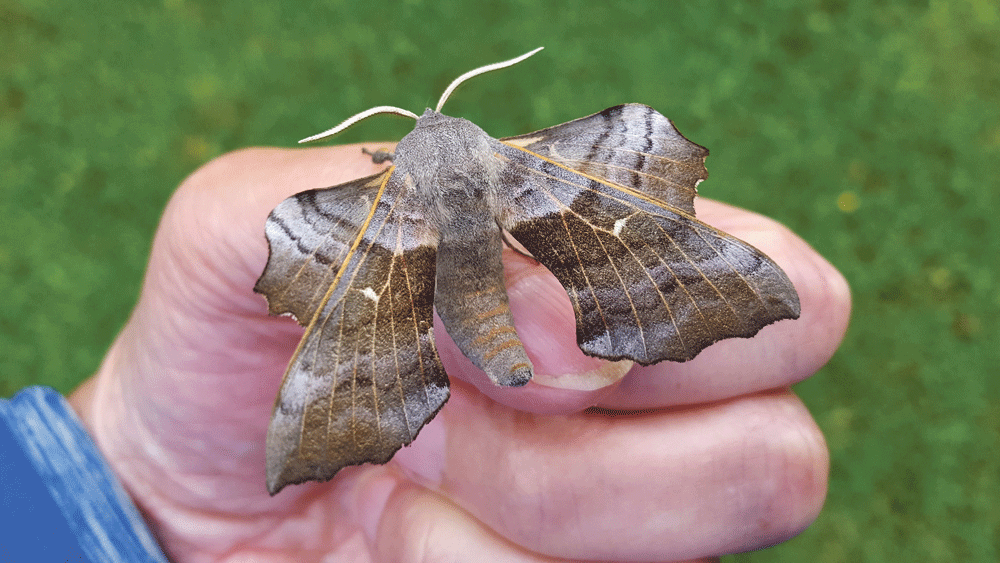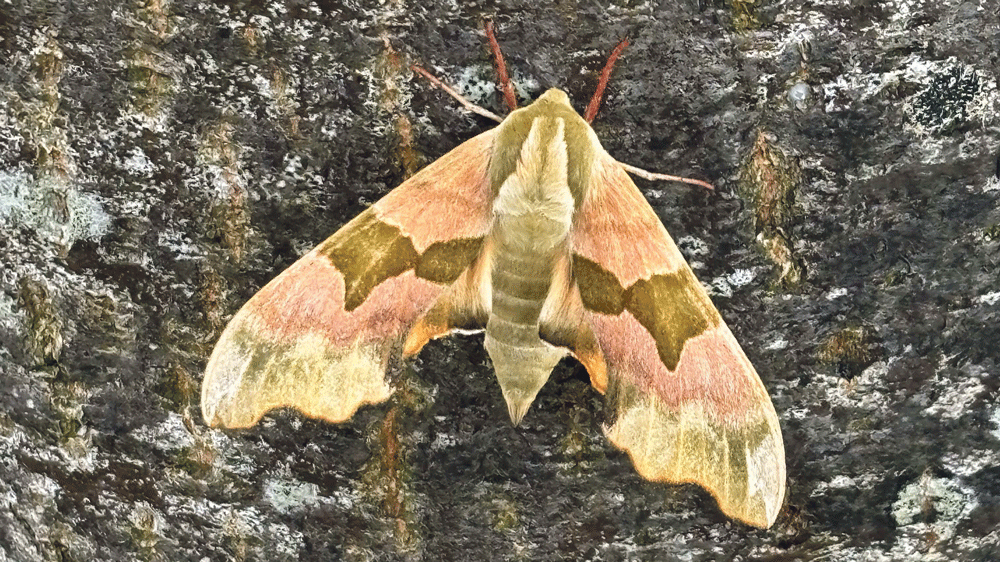

Nature on our doorsteps: Mighty Hawk Moths
Rosaleen Dwyer is the County Heritage Officer at South Dublin County Council – every week she gives us an insight into the natural heritage around us and the beautiful biodiversity of the plants and creatures
Some of the largest moths to be seen in Ireland are the Hawk Moths.
While some of these species are described as being resident in Ireland (living and breeding here), others are summer migrants and only arrive here at particular times during the season.
These summer migrants do not breed here, at least not yet.
The Hawk Moths are generally quite large insects with sturdy, heavy, bodies.
They have long, pointed abdomens, and some species tend to curl the tips of these upwards when at rest.
The Poplar Hawk Moth is one of the largest of this family, with a wingspan of up to 9cm.
This moth has grey-brown wings which it holds up and away from its body, making it look even larger than its wingspan suggests.
The edges of this moth’s wings are delicately scalloped, and this shape along with the wing colour makes the moth look like withered leaves.
This helps to protect the insect from predators during the day.

This Lime Hawk Moth was spotted this month in Lucan Photo by C Bolger
Unlike many other moths, the hind wings of the Poplar Hawk Moth, which are underneath the forewings, are often held ahead of the leading edge of its larger top wings, again helping to make this moth look bigger.
The Lime Hawk Moth is also a large insect, reaching a wingspan of between 7-8cm.
Its forewings are patterned with a mix of olive-green, pink and buff colours, often with a central darker band of green.
This colouration helps the Lime Moth to blend into the background, but it can sometimes be spotted resting on the bark of trees or on the main food plant of its caterpillar, the Lime Tree.
The Lime Hawk Moth is one of the summer visitors to Ireland, coming in from the southern end of Britain when winds and warm weather allow.
It has been seen more frequently in Ireland in recent years, however, and this may be due to warming climatic conditions.
Although both the Poplar Hawk Moth and the Lime Hawkmoth are impressive insects, they do not feed as adults.

